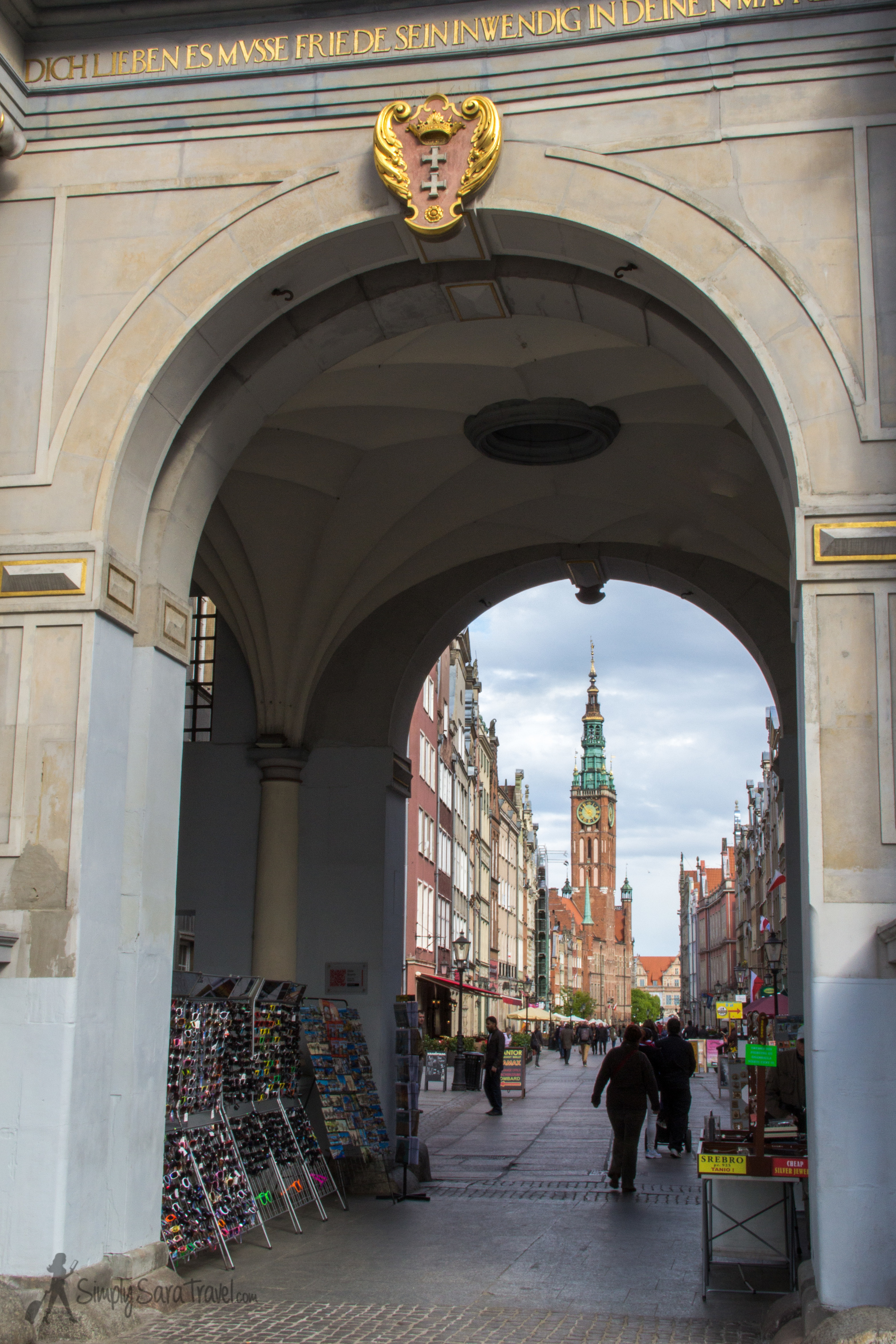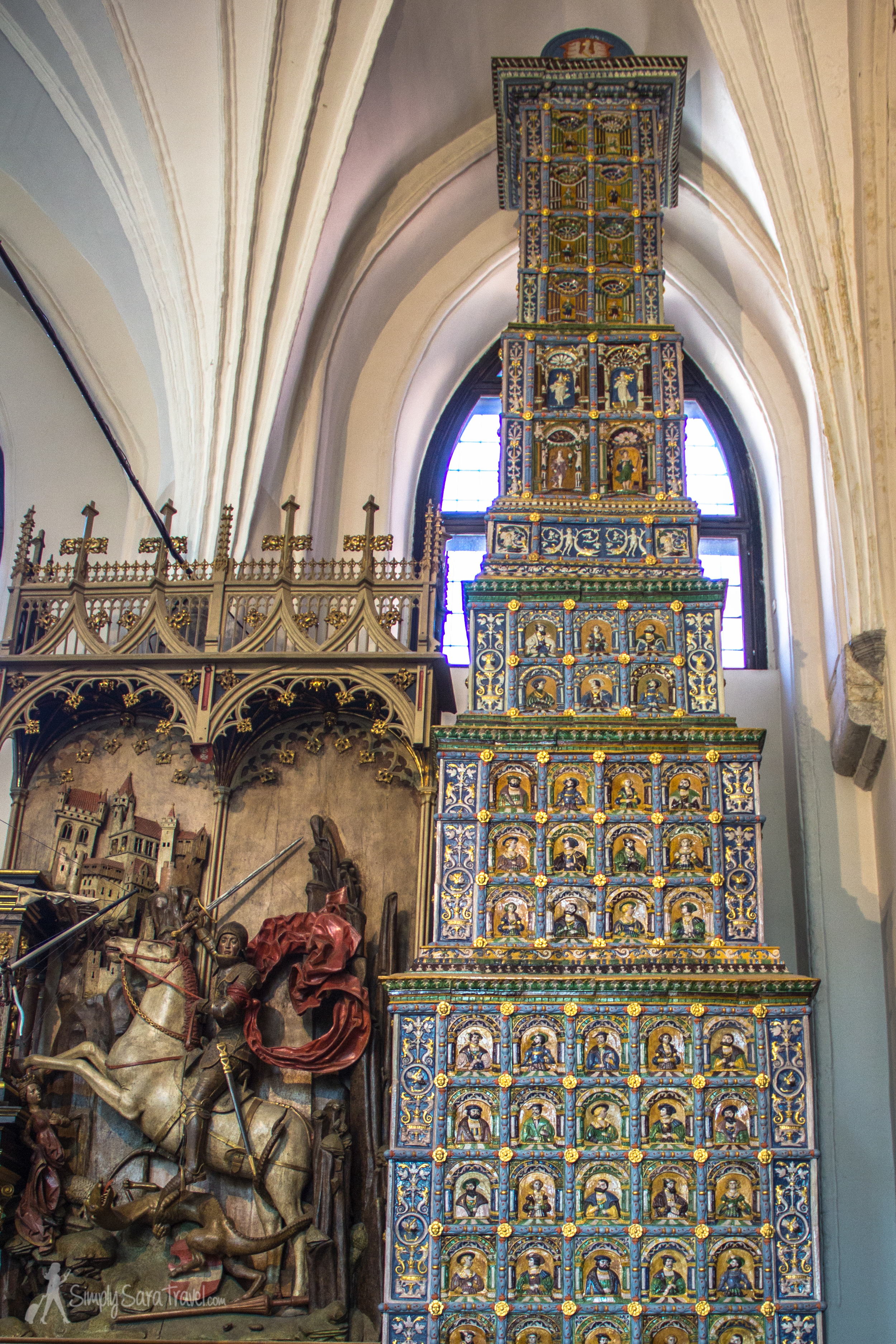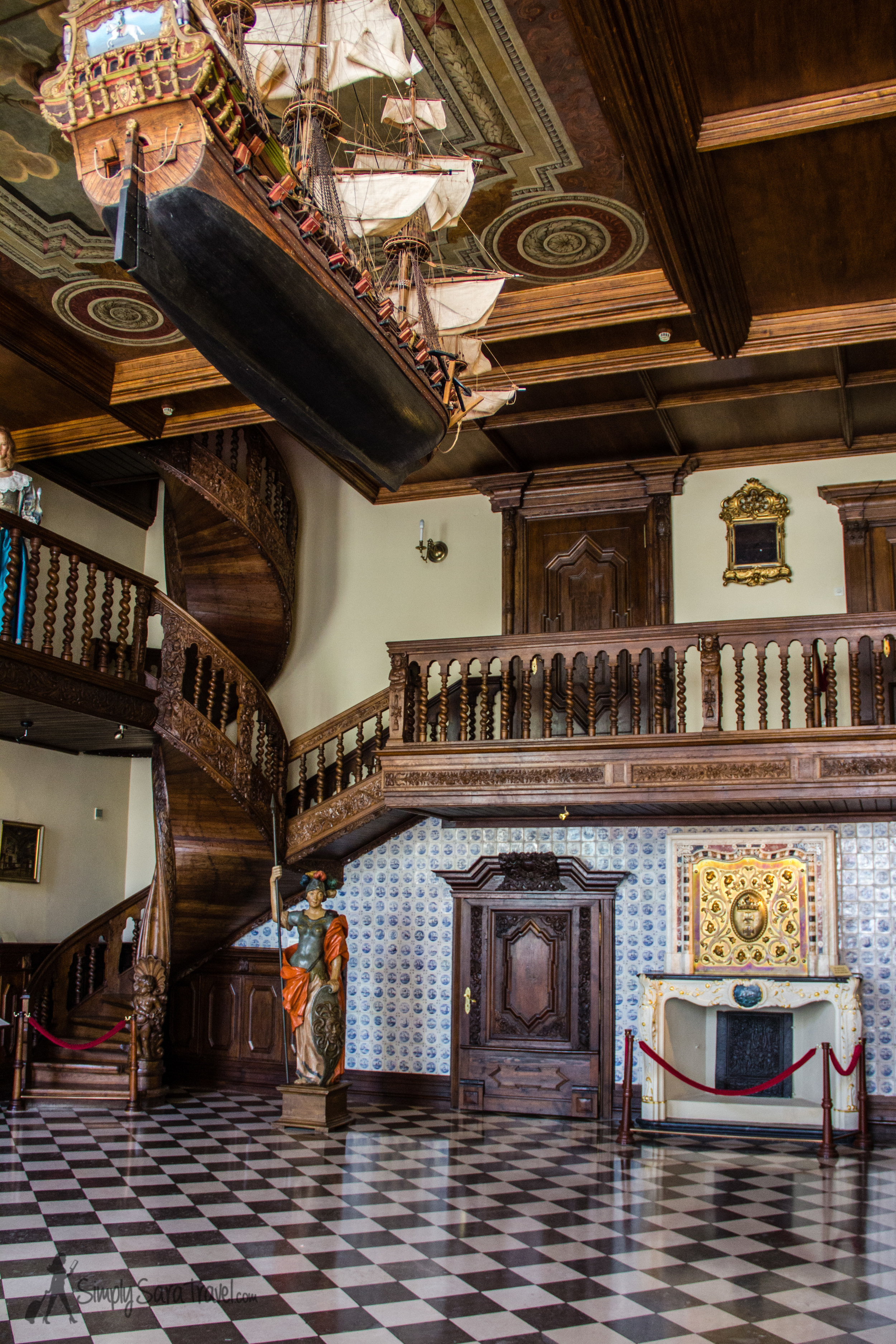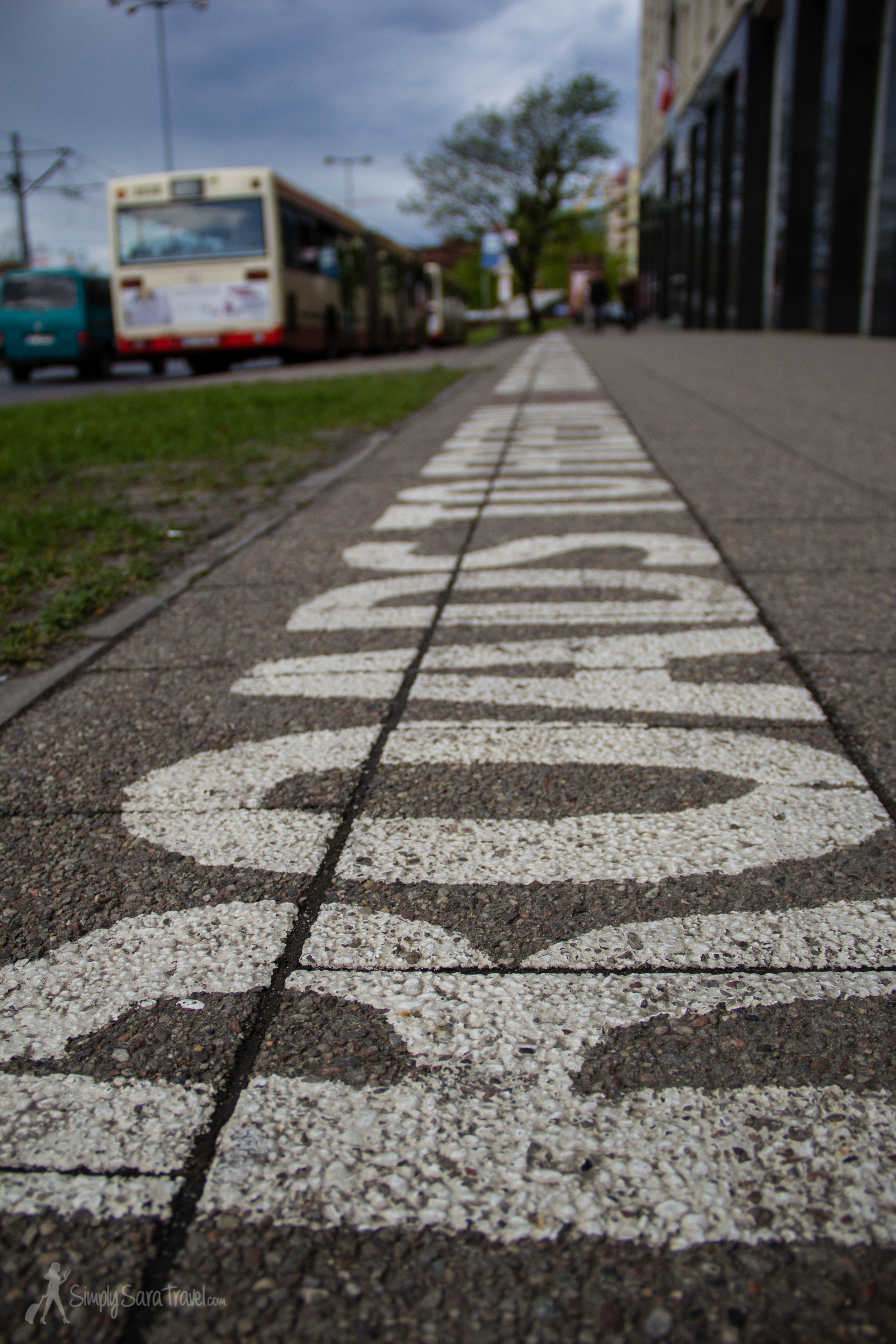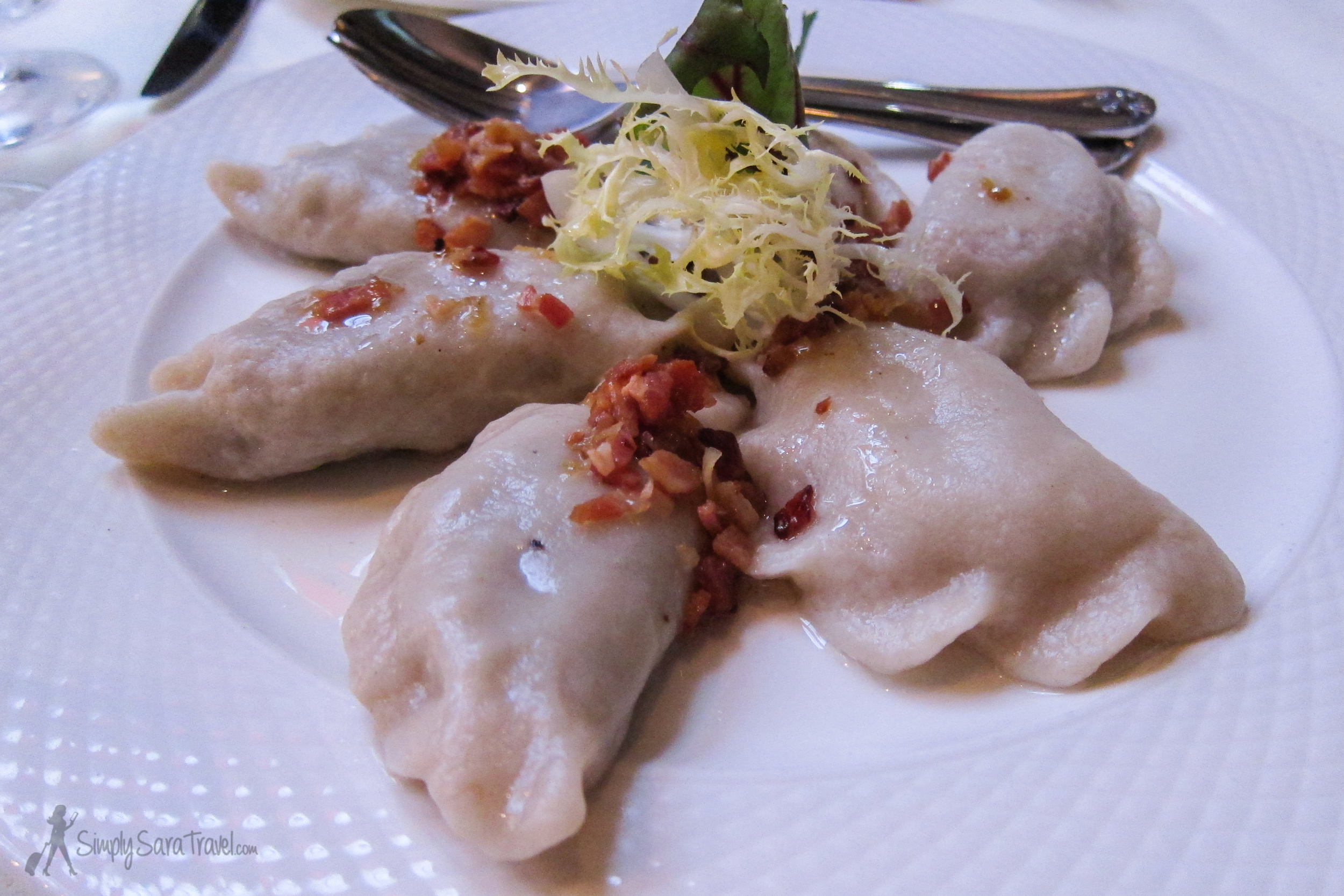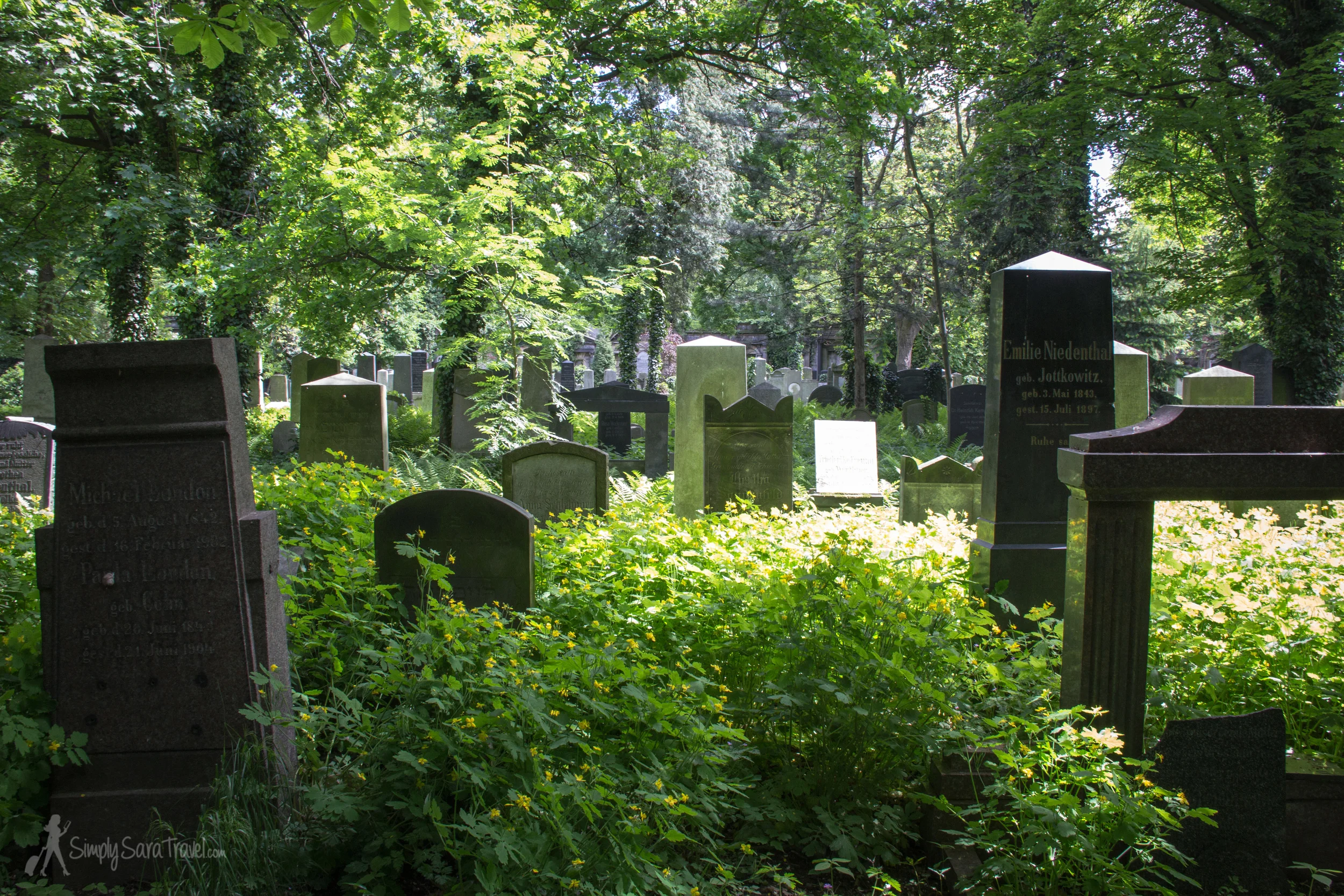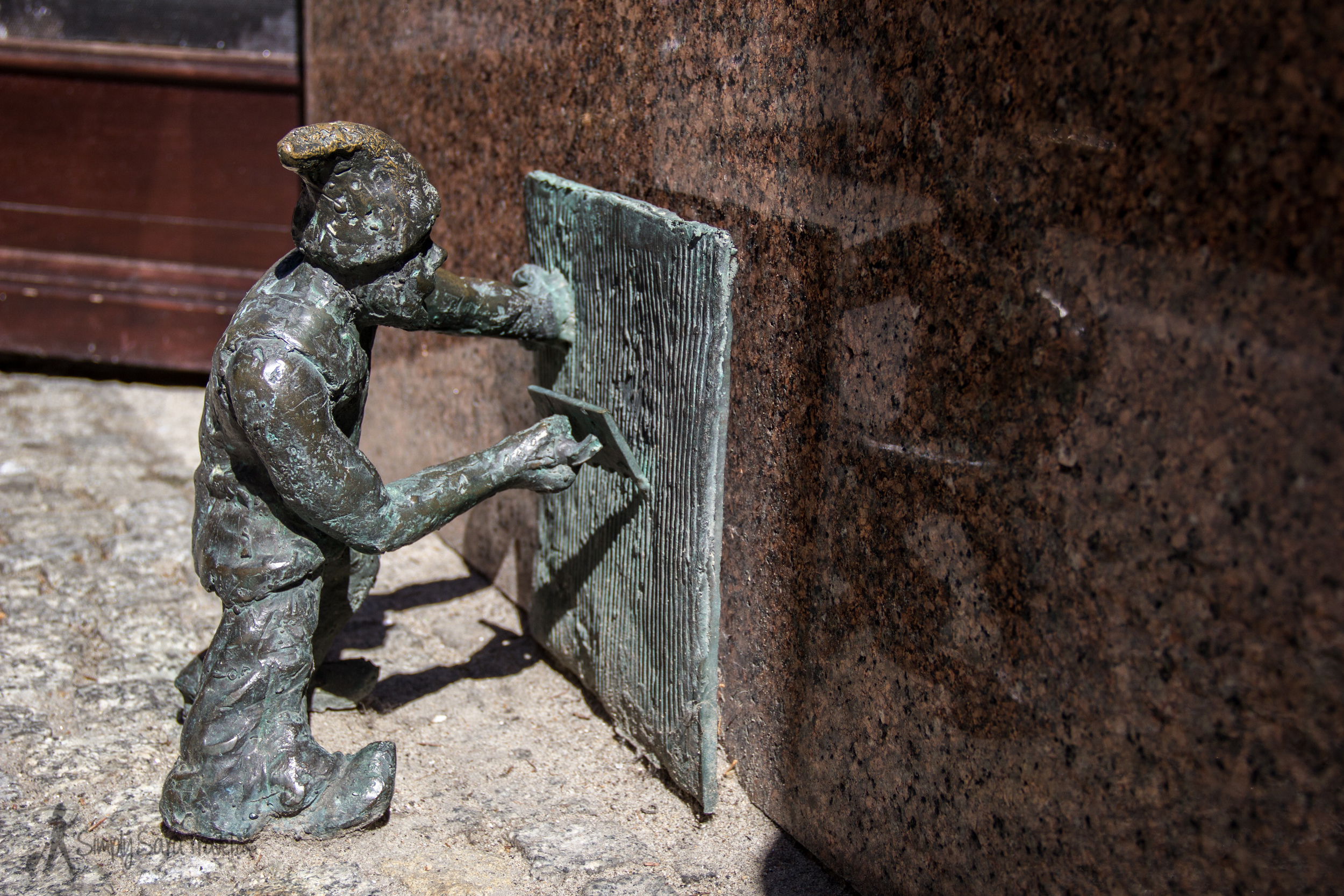It’s no mistake that I started to talk about our time in Gdańsk, and then diverted over to the side trips we took to Sopot and Malbork Castle. Every time I sit down to try to tackle what we did and saw in Gdańsk, I get overwhelmed. There was a lot to see and do, yet it was charming and picturesque enough to just sit back and enjoy without an agenda or plan.
Part of what I appreciated about Gdańsk is that there’s variety. There are boats to see and even ride, museums to visit, churches to wander into, lots of history to study, easy access to the beach, amber to shop for, plus good food and hang-out spots when the time comes just to relax. Let me try to unpack the city a little more by its elements:
the royal way and its Sights
My favorite place in Gdańsk was hands-down the Royal Way. It emcompasses Ulica Długa, and then turns into Długi Targ. It’s here that you can get a sense of the city’s background and its former wealth.
If you remember from Malbork Castle, the Teutonic Knights settled in this area and gained control of trade on the Baltic Sea. This meant that the Germans controlled this area, and the city of Gdańsk joined the Hanseatic League with many other mostly German towns to make a powerful trade network. When Poland managed to overthrow the Knights, Gdańsk managed to exist as a somewhat independent enclave. In the late 18th century, it became part of Prussia, and after World War I it became independent again, known as the Free City of Danzig.
This little history lesson is all to explain why WWII broke out in Gdańsk. Hitler was coming to seize this predominantly German city and join it back to the motherland. (And keep going and conquer Poland while he was at it.) Gdańsk was pretty much wiped out during WWII, though it wasn’t all due to the Nazis’ invasion. The Soviet Army came through and unleashed hell on the city, seeing it as a German city and leveling much of it to the ground. This beautiful street has since been reconstructed thanks to the pre-existing drawings, paintings, and photographs.
The Neptune Fountain, an appropriate figure for a maritime city.
It’s a gorgeous street to stroll down, with its ornate facades lining the street. As you can probably tell from these photos at various times of day and weather conditions, we came here a lot during the course of our four-day visit. I normally don’t eat on such main streets like this, but we enjoyed the Pellowski Cafe in the mornings for some pastries and coffee. Another evening was spent sipping beer under a heat lamp and blanket as the sun went down. It’s the kind of street that you detour over to as you walk from one place to the other in town just because it’s so picturesque. Every city should have a street like this!
Royal Way of Gdańsk, featuring Town Hall on the right-hand side
The Royal Way isn’t just a nice street to walk down though - it has a few attractions to pop into, and because we happened to hit them all (quite coincidentally) on Tuesday which is the free entry day, we got to see these three attractions at no cost!
First was the Main Town Hall, featuring some ornate rooms befitting for those running Gdańsk.
The ceiling in the Main Town Hall, Gdańsk
Next up was Artus Court, where brotherhoods and guilds met in the Middle Ages (ie. more powerful guys).
This massive stove is one of the highlights of Artus Court. It dates back from the 1500's and has retained almost all its original tiles!
The last was the Amber Museum. You can purchase amber throughout the country, but Gdańsk is really the place to shop for it. (Just consider that the Baltic coast is also called the Amber Coast.) Here you can learn a bit more about amber and see lots of examples. Of course, you can continue your research in the many shops in town, though if you want to see cool things like trapped insects and such, take the time to visit the museum.
Inspecting some trapped bugs at the Amber Museum in Gdańsk.
Museums:
Besides the attractions I’ve mentioned along Dluga Street, there is one more museum to note. We visited the National Museum in Gdańsk to view its art collection. While the museum on a whole wasn’t the most interesting to me (and I generally enjoy art museums), seeing this one piece of art was a highlight.
Below is a little scene that’s part of Hans Memling’s triptych of the Last Judgement. This Flemish painter’s work is incredibly detailed and beautiful, and the story of this particular work is quite amusing. It was on its way to a recipient in Florence who had commissioned it when pirates from Gdańsk intercepted. The pirates presented it to St. Mary’s Church in Gdańsk, and it was used as the altarpiece. Over time, it was taken from Poland twice - once to France, once to Russia. (What goes around, comes around is the lesson here...) It was returned most recently from Russia in the 1950’s, though this museum took it into its collection to preserve it. St. Mary’s Church still wants it restored to its original home, post-pirate-incident, but for now they have a copy of the triptych in place instead.
The painting that is "a real steal!" Hans Memling's the Last Judgement is one well-traveled piece of art!
Churches:
The church to see in Gdańsk is the aforementioned St. Mary’s Church (which used to house the Last Judgement altarpiece). It’s the world’s largest brick church. It has a plain, white-washed interior with a few notable things to see, like its astronomical clock and the largest stained glass window in Poland (located behind the altar).
The other thing to do while here is to climb its tower for a view of the city. As you probably can tell by now, I can’t resist getting the opportunity to see a place from above. So it probably goes without saying that we of course climbed the tower for a better vantage point of the city (and hopefully worked off some of those delicious pierogi we’d been eating on the trip!).
The tower of St. Mary's Church offers some pretty views of Gdańsk!
A view of Gdańsk, the Martwa Wisła river that runs through it, and even a glimpse of the Baltic Sea
The other church I’d like to mention is the Church of the Holy Trinity (Kościół Świętej Trójcy), one that we wandered into on our way to the National Museum. There’s nothing exceptional to note, although I have to share the manger scene. As I’m starting to see, Europe does its own take on the scene of Jesus’ birth - like the Catalonians who place a figure err, popping a squat if you will, as a game for children to find. Here in Gdańsk there are some additional flourishes to who showed up to wish the Holy Family well:
Pope John Paul II at the manger scene at the Church of the Holy Trinity in Gdańsk. I'm telling you, he shows up everywhere in Poland!
Historical Places:
Gdańsk bears the dark mark in history as the starting point of WWII. Hitler ordered attack on Westerplatte on September 1, 1939 and the invasion on Poland began.
The Monument to the Defenders of the Coast towers above on a hill at the entrance to the harbor.
Though there isn’t much to see at Westerplatte, I was still interested to set foot on this historic spot. And let’s be honest, the fact that it included a boat ride on a 17th-century galleon for about 1.5 hours round-trip really sealed the deal.
We walked around for about an hour before taking the next ship back. What you can see (and walk right up to) is the huge Monument to the Defenders of the Coast that honors those who bravely defended Poland. There are also some bunkers as well as a small exhibition outdoors that traces Westerplatte’s modern history, first as a health resort and then the battle that broke out here. It’s not a must-do when in Gdańsk, but I always enjoy a good boat ride with some WWII history on the side.
Lovin' a boat ride on the waters of Gdańsk!
Defending Gdańsk since 2014...
This next historical sight is the must-see when in town. It’s a visit to the Gdańsk Shipyard and the Roads to Freedom exhibit to see the Solidarity sights.
I must admit that often when I reflect on WWII, I have a sense of relievement with the end of the war. I suppose it comes from what I’ve learned in American history class. The US won along with the Allies, and all was ok again, besides some Cold War tensions. Diving into some history lessons in Poland’s museums was a sharp reminder that this wasn’t the case for everyone.
The “Roads to Freedom” exhibit gave some insight to what life was like for those in Poland under communist rule. There were food shortages and poverty that even continued up into my lifetime. For the first time I realized that my Polish friends may even remember such hardships.
The communist government kept raising prices of food. In December of 1970 they imposed another price hike, right before Christmas. This prompted strikes in Gdańsk and some other cities along the Baltic coastline, in response to the elevated prices right before the holidays. People were urged by the government to return to work. When workers returned on December 17th to the shipyard of Gdańsk, the army and police opened up fire, unprovoked.
A defenseless worker trying to shield himself against the bullets - a tribute to those who lost their lives at the hands of the communist regime.
The exhibition continues with the years to follow. The Monument to the Fallen Shipyard Workers of 1970 was erected ten years later, and was the first time that a communist regime allowed a monument to be built acknowledging victims of communist oppression. At this time, the Solidarność (Solidarity) trade union formed and played an instrumental role in the fall of communism. One thing I found particularly interesting was the role Pope John Paul II played in all of this. I’ve mentioned his presence in Poland (like in Krakow and the Wieliczka Salt Mine), and am amused by the places he sometimes pops up (like in the manger scene above), but I learned that he is beloved more for simply being Polish. He inspired his people to fight back nonviolently during their oppression and gave hope to Poland.
There is obviously more to the story - so it’s definitely worth taking some time to learn about this important movement. [I noted below, but this exhibit is no longer open. But instead, you can visit the newly-opened European Solidarity Centre!] Like my time in Warsaw, it really helped me appreciate where the city has come from after seeing the devastation Gdańsk suffered from during WWII and the continued oppression it endured for decades afterwards.
And that’s Gdańsk! I think there is something for everyone to enjoy in this lovely city. Those who I consulted with on my Poland itinerary were right - I agree that Gdańsk is a must-visit when planning a trip through Poland!
PLAN YOUR TRIP:
Main Town Hall
Ulica Długa 46/47, Gdańsk, Poland
Closed Monday
Open Tuesday 10am-1pm, Wednesday/Friday/Saturday 10am-4pm, Thursday 10am-6pm, Sunday 11am-4pm
Free admission on Tuesday
Artus Court
Ulica Długi Targ 43-44, Gdańsk, Poland
Closed Monday
Open Tuesday 10am-1pm, Wednesday/Friday/Saturday 10am-4pm, Thursday 10am-6pm, Sunday 11am-4pm
Free admission on Tuesday
Amber Museum
Targ Węglowy 26, Gdańsk, Poland
Closed Monday
Open Tuesday 10am-1pm, Wednesday/Friday/Saturday 10am-4pm, Thursday 10am-6pm, Sunday 11am-4pm
Free admission on Tuesday
National Museum of Gdańsk
Toruńska 1, Gdańsk, Poland
Closed Monday
Open Tuesday-Friday 9am-4pm, Saturday and Sunday 10am-5pm
Admission: Normal price 10 pln, Reduced price 6 pln, Family ticket 18 pln (prices as of February 2015)
Basilica of St. Mary of the Assumption of the Blessed Virgin Mary in Gdańsk [link in Polish]
Podkramarska 5, Gdańsk, Poland
Open daily, see website for hours
Admission: 4 pln, 2 pln for students (prices as of February 2015)
Tower is open April - October to climb (see website for hours); 5 pln, 2.50 pln for students
Church of the Holy Trinity (Kościół Świętej Trójcy)
Świętej Trójcy 1, Gdańsk, Poland
Open daily
Free admission
Westerplatte
Gdańsk, Poland
The monument and exhibits outside are free.
We took this 17th-century galleon to Westerplatte - the ship is docked in Gdańsk, at Długie Pobrzeże Street by the Green Bridge (Zielony Most) near the Old Town.
Runs April-October from 10am-sunset - see schedule on their website or take a look at the board where the ship is docked.
Price (for the boat ride) is 40 pln round-trip, 25 pln reduced price round-trip (prices as of February 2015)
One way from the Old Town to Westerplatte takes 45 minutes.
Monument to the Fallen Shipyard Workers of 1970
Plac Solidarności, Gdańsk, Poland
Roads to Freedom - this exhibition is now closed as of September 2014 - while you can no longer see the exhibit I saw, now the European Solidarity Centre is now open instead.
European Solidarity Centre (Europejskie Centrum Solidarności)
Plac Solidarności 1, Gdańsk, Poland
Open daily, October-April 10am-6pm / May-September 10am-8pm
Admission: Regular price 17 pln, Reduced price 13 pln, Family ticket for up to 5 people 47 pln (prices as of February 2015)


